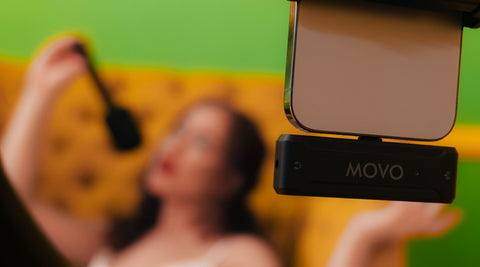Your Cart is Empty
February 14, 2023 4 min read
The synthetic fur covers on microphones in video production are often referred to as a “dead cat” or “wind muff”. These funny looking covers can block wind from hitting the microphone, therefore reducing the wind noise from being recorded.
When recording video or audio outside on a breezy day, you'll probably hear the wind “cutting” your audio. Even a gentle breeze can completely destroy an otherwise perfect audio recording, especially when using ashotgun or condenser microphone.
Ask any videographer or sound professional, and they'll tell you that it's extremely difficult (or maybe even impossible) to remove wind noise in post. The most useful and easiest solution to avoid all this pain? Use awindscreen!
Also called wind muffs, windscreens come in many shapes and sizes to fit different kinds of mics. There are tiny muffs that are specially made for youriPhone and GoPro microphones, as well as a plethora of big ones for professional sound recording. Before we get to our recommended microphone cover for your device, let’s first see the different kinds of wind muff and what they specifically do.
Pictured above: an example of a living cat. It was not harmed in the production of any dead cat windscreens.
This is the most common type of windscreen, and it is often used in studios and indoor recording environments because it blocks the least amount of wind compared to the other wind muffs.
Many microphones are supplied with afoam windscreen made of polyurethane—a material that is effective at blocking the wind at less than 1 m/s (about 2 mph). Typically, the denser a foam windscreen is, the better it is at reducing wind noise.
The fluffy “dead cats” use a lightweight synthetic fur material to block wind. (No actual cats were injured in the making of these handy accessories). But take one look, and you’ll understand why they earned their delightfully morbid industry nickname. This is the best choice for anyone with a tight budget. The furry material blocks wind but allows audio to pass through without losing the high-frequency response of a microphone.
You can also combine the dead cat with the foam windscreen for an even better effect to block wind blowing at a high speed, like 6 m/s (about 13 mph).
The most effective windscreen on the market is theblimp, a microphone cover that is shaped like a giant pill. It is a hollow cage that creates an open chamber of space of still air around the mic. Unlike other muffs that only cover the mic head, blimps enclose the whole microphone, including the body, to completely protect it from vibration. This is important in extreme weather conditions where the wind can shake the base of the mic and distort the sound it records. With a blimp housing the microphone and absorbing shock, noise can be substantially reduced from the final audio output.
Depending on your recording situation, you may or may not need a blimp. If you are seeking one, make sure to check the material and weight, as the newer versions are often much lighter than the old ones.
The right windscreen for your device depends on the external microphone you use with it. For example, we recommend getting thisSaramonic Furry Outdoor Microphone Windscreen that is specially designed for GoPro’s stereo ball microphone.
Take a look at some of our recommended wind muffs for vlogging, interviews, and action videos
A professional windscreen forportable digital recorders like Zoom H4n, H5, and H6. It reduces wind noise by 24dB to 40dB with its inner acoustic foam technology and artificial rabbit fur.
This fitted nylon windscreen is part of our premium line of microphone covers. It also features a ballistic nylon exterior and an airtight rubber base for complete protection and superb noise reduction with minimal high-frequency loss.
Measure your microphone so that the wind muff fits well. Having a tightly-sealed windscreen is important when selecting a wind muff because the wind can cut its way into your device from every direction. This is also why an airtight rubber base is an important feature to check when weighing your options.
Find spacing, dimension, and weight info on the items listed in ourfurry and foam windscreen collection.

Looking for a microphone for singing and recording vocals? Movo can help you learn about the best mic options so that you can get the best sound for your singing.

Dive into a detailed comparison tailored for smartphone videographers. Discover which mic type best suits your mobile filming needs and ensures crisp audio quality.

Unlock professional-quality iPhone interviews with Movo shotgun mics. Explore our guide on microphone types, advantages, and essential tips to elevate your interview recordings.